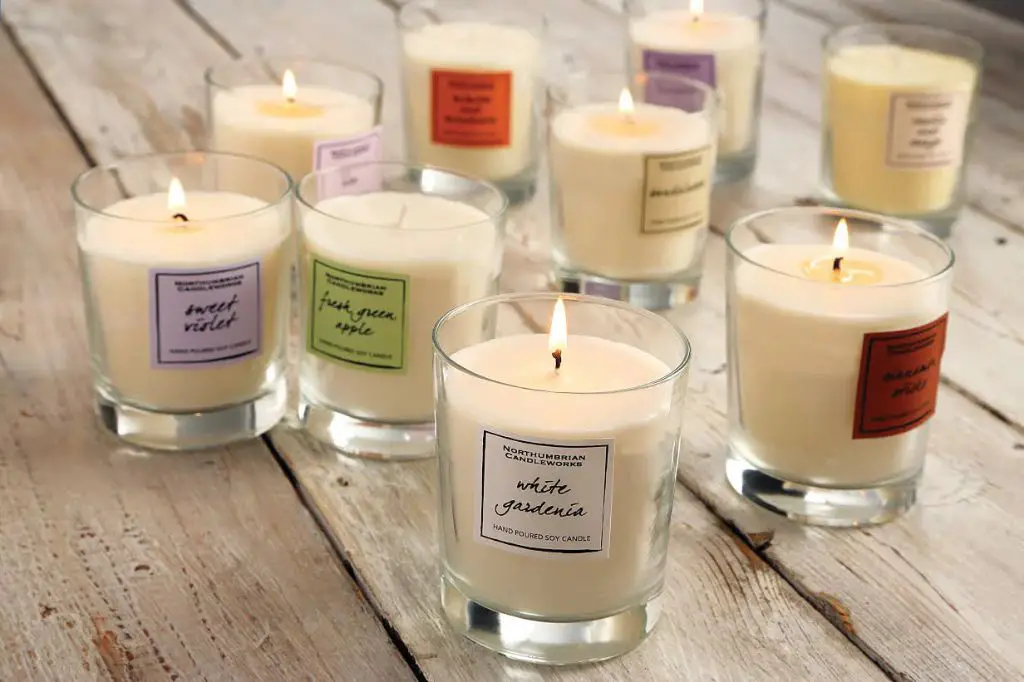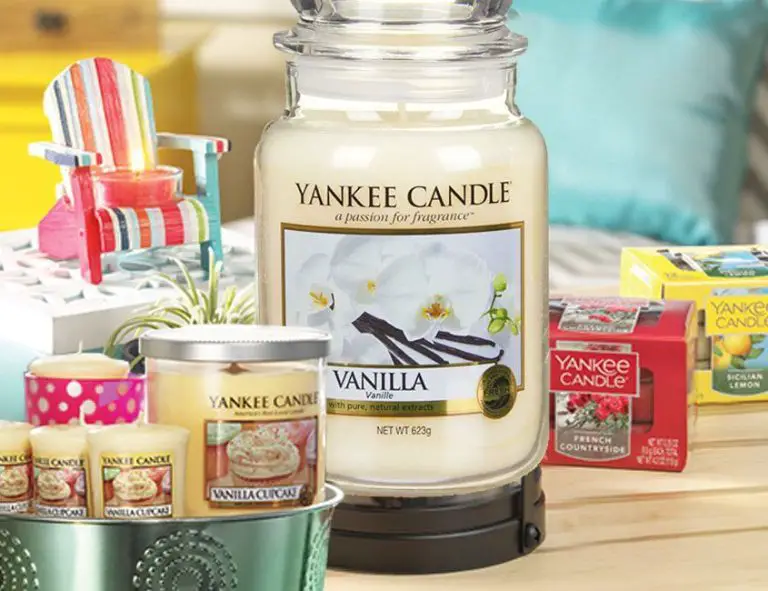What Is A Candle Short Description?
A candle is a cylindrical or rectangular block of wax or tallow with an embedded wick that is lit to provide light, heat, or scent. The candle wick is a string made of cotton or other fibers that holds the flame. As the wick burns, it melts the wax around it which is then drawn up the wick to fuel the flame.
According to the Webster’s dictionary, the definition of a candle is “1) A cylindrical body of wax or tallow formed around a wick and burned to give light” (Source).
Candles have been used for thousands of years to provide light and heat. Today, while they are no longer a primary light source, candles remain popular for their ambiance, scent, and decorative value.
History
The origin of candles dates back to ancient times. Archaelogical evidence shows that candles were used in China and Egypt as early as 3,000 B.C.E. History of candle making – Wikipedia. The first candles were made from whale fat and as candle making advanced, beeswax and tallow became the most common materials used. Candles were crucial sources of light in ancient times before the invention of electricity. They allowed people to extend their days beyond sunset and were used everywhere from homes to temples.
Candle making was an important craft in ancient civilizations. The earliest candle wicks were made from dried papyrus reeds that were dipped in melted tallow or beeswax. Over time, candle wicks evolved to use various materials like string, rushes, and linen. Candle making was predominantly done by hand until the Industrial Revolution when manufacturers developed new production methods to make candles affordable for mass consumption.
Components
Candles are made up of several key components that work together to create light and aroma.
Wick
The wick is a cord that runs through the center of the candle wax. It is generally made from materials like cotton, paper, or wood (Source). When lit, the wick absorbs wax via capillary action and draws it up to the flame. This allows the wax to vaporize and burn.
Wax
Candle wax is typically made from paraffin, soy, beeswax, or other natural waxes. The wax melts and vaporizes to fuel the flame. Different waxes have different melting points, burn rates, and properties (Source).
Scent
Many candles are infused with essential oils, synthetic fragrances, or other aroma compounds. As the candle burns, the heat helps diffuse the scent into the surrounding air.

Color
Dyes and pigments are often added to candle wax to produce candles in an array of colors. Popular colors include white, ivory, pink, red, blue, and yellow.
Types
Candles come in a variety of shapes and sizes for different uses.1 Some common types include:
Taper Candles
Taper candles are long, skinny candles that get wider at one end. They are designed to fit into candle holders. Tapers are commonly used for formal dining tables and candelabras.
Pillar Candles
Pillar candles are thick, cylindrical candles that can stand on their own. They come in varying heights and widths. Pillar candles are versatile and can be used for centerpieces, mantels, and more.
Container Candles
Container candles are poured into jars, tins, or other holders. They typically burn for longer than other types of candles. Container candles are commonly scented and used for home decor.
Votive Candles
Votive candles are small, cup-shaped candles designed to fit into glass votive holders. They are inexpensive and burn for 5-10 hours. Votives are popular for centerpieces, accent lighting, and memorials.
Wax
There are several common types of wax used to make candles:
Paraffin Wax – This is a petroleum-based wax made from refining crude oil. It is the most commonly used candle wax and is relatively inexpensive. Paraffin wax candles burn cleanly and are dripping candles. However, some find the scent unpleasant and prefer natural waxes.1
Soy Wax – This natural wax is made from hydrogenated soybean oil. Soy wax candles burn slower and cooler than paraffin. The wax can hold more fragrance oil. Soy wax is also biodegradable and renewable.2
Beeswax – Beeswax is a natural wax produced by honey bees. Beeswax candles have a subtle sweet scent when burning. The wax is expensive but valued for its natural properties. Beeswax candles burn brighter and longer compared to other waxes.
Gel Wax – This is a mineral oil-based transparent wax. Gel wax allows vivid colors and can hold heavy scents. Gel candles are smooth, dripless, and burn clean.
Wicks
Candle wicks are typically made from natural materials like cotton, wood, paper, or beeswax [1]. Cotton is the most common material used for wicks due to its ability to burn evenly and draw wax up the wick through capillary action. Cotton fibers are braided, knitted, or twisted together to form the wick [2].
Braided cotton wicks are made of several cotton strands twisted together, making them very sturdy. They tend to burn slower and cooler than single ply wicks. Single ply wicks have only one cotton strand, so they tend to burn faster and hotter. The type of wick chosen depends on factors like the wax being used and the desired burn properties.
Scents
One of the most important aspects of a candle is its scent. Candles can be unscented or use natural or synthetic fragrances. Natural fragrances come from essential oils and plants materials like flowers, fruits, and herbs. They provide an authentic, pure scent but can be more expensive. Synthetic fragrances are chemically formulated in a lab to mimic natural scents. They allow for consistent, affordable fragrance but lack the complexity and depth of naturals.
According to CandleScience, some of the most popular candle scents are lavender, eucalyptus mint, mahogany teakwood, and pumpkin https://www.candlescience.com/fragrance-oil/. Southern Elegance Candle Co. also offers signature scents like Sweet Tea, Carolina Pine, and Fresh Linen https://www.secandleco.com/collections/signature-candle-scents. The scent makes a strong imprint and helps define the candle experience.
Color
Candles come in a variety of colors, both from dyes that are added and the natural color of the wax. Dyes are often added to candles to produce bold, vibrant colors like red, blue, green, or purple. On the other hand, candles can also be made with clear, uncolored wax like paraffin or beeswax which will give the candle a creamy off-white appearance.
The color of a candle can impact the overall look and feel. Clear, uncolored candles give off a classic and clean aesthetic. Colored candles can set a mood or tone for the ambiance. For example, red candles symbolize love or passion, while blue candles can create a calming effect. The color of the candle also affects how dyes burn and the scent throw. Darker colored candles tend to heat up more, allowing the fragrance to be stronger. With clear wax, the fragrance may be lighter. Ultimately the candle color is an important design choice based on the desired look, feel and strength of scent.
Uses
Candles have numerous practical and decorative uses. Some of the main uses include:
Lighting – Candles provide a natural source of light and are still commonly used during power outages or camping trips. They create a soft, warm glow that many find more pleasant than electric lighting (Candle History and Uses).
Aromatherapy – Scented candles release fragrance into the air as they burn, which can have calming or uplifting effects. Burning certain scents is believed to promote relaxation, improve mood, and more (15 Benefits of Burning Candles – The Sojourn Company).
Decoration – Candles add ambiance and a decorative touch to any space. They are commonly used to create cozy, romantic atmospheres and can be part of centerpieces, holiday displays, and more (4 Uses of Candles in Daily Life – outofdarknesscandleco).
Fun Facts
Did you know that the earliest known candle was found in a cave in France and dated back over 5,000 years? Candles have been used for light and to mark time for centuries. Other interesting candle facts include:
The first candles were made from animal fat called tallow. Beeswax candles were invented around 3,000 years ago in Ancient Egypt. Candles derived from whale oil were developed in the 1800s. Paraffin wax candles, made from petroleum, were created in the 1850s and became the most popular candle material.
Colonial Americans relied on candlelight to get through the long nights before electricity. Candlemaking was actually one of the very first professions in America.
Candles were once measured with timed burnings called clocking. A clock hour equated to 120 grains of wax used per hour. Today, candles are rated by total burn time.
Scented candles originated in Ancient Egypt, Greece, and Rome, where fragrant oils were added to wax to mask odors and perfume the air. Scented candles became popular again in the 19th century and are now one of the most common types of candles produced.
The largest candle ever lit weighed over 12,000 pounds, stood over 6 feet tall, and had a diameter of over 3 feet. It burned for over 45 days.
The majority of candles are purchased between December and February, as they are popular Christmas and holiday gifts. Candle sales peak around Christmas and Hanukkah.
Studies show that the light given off by burning candles activates areas of the brain that are related to peacefulness. The soft, natural light is said to have a calming effect on people.




